General information
-
Astro-COLIBRI is an innovative platform designed to revolutionize the study of flaring astrophysical events by integrating real-time multi-messenger observation tools in a comprehensive, user-friendly graphical interface. By bundling and evaluating alerts about transient events from various channels, Astro-COLIBRI streamlines the process of coordinating follow-up observations, enabling professional and amateur astronomers alike to better understand the nature of these events through complementary observational data. Astro-COLIBRI supports a wide range of astrophysical source classes, including Active Galactic Nuclei (AGN), Gamma-ray Bursts (GRBs), Fast Radio Bursts (FRBs), Gravitational Waves (GWs), High-energy Neutrinos, Optical Transients (OT), Supernovae (SN), and more. By incorporating multi-messenger services, catalogs, lightcurves, and alerts from various observatories and systems, Astro-COLIBRI facilitates seamless collaboration and data sharing among the astronomy community.
-
Definitions
- Event times: UTC (precision: 1 second)
- Time resolution for visibility assessement: 1 minute (10min for multi-observatory visibility plot)
- Coordinates: Equatorial, J2000 (precision: 0.01 deg)
- Localisation uncertainties are taken from the discovery instruments (typically 90% CL)
- Sky map in equatorial coordinates is centered on RA=180deg
- Longitudes are negative toward West
- Image size on Pan-STARRS and SkyMapper: 0.05deg x 0.05deg
- Contour levels (e.g. GWs and Fermi-GBM) are 50% and 90%
- Science mode: the web frontend allows to activate a scientific interface providing additional information about each event, additional links to external ressources, and access to observability assessements Alert ingestion cadences:
- GCN notices: real-time ingestion from the Kafka stream
- GCN circulars: every 5 minutes
- TNS: every 5 minutes (for new transients) and twice per day (for updates to recent transients)
- CBAT: every 5 minutes
-
Notifications
For most streams, the notifications are sent as soon as the detection of the new transient is announced. In order to reduce the amount of information to a reasonable level, optical transients are only announced when their type is classified and announced via the Transient Name Server (TNS). This is often only done after additional (spectroscopic) observations, thus introducing a delay between the source detection and the Astro-COLIBRI notification that can range from hours to days (sometimes even weeks/months).
- GRBs : Gamma-ray burst alerts (incl. names and identification)
- Well localized GRBs : subset of GRBs with localisation uncertainty <= 10arcmin
- Neutrino : IceCube, AMON (e.g. Nu-EM coincidences), and SuperK supernova alerts
- GW : Advanced Ligo / Advanced VIRGO / KAGRA alerts (during O4, i.e. since May 2023)
- Significant GW: subset of the "GW" alerts with FAR < 1/month; indicated by an exclamation mark in the notification title
- NS/NSBH GW: subset of the "GW" alerts with P(NS) + P(NSBH) > 50%; indicated by "NS" in the notification title
- Well localized GWs: subset of the "GW" alerts with the 90% containment area < 100 deg^2
- SNe : optical transients characterized as supernova
- OTs : optical transients not classified as SNe (e.g. novae, CVs, TDE, AGN, etc.)
- Bright OTs : optical transients (SNe and OT) with magnitudes < 18 (i.e. a subset of the two categories above)
- Unistellar: bright and early optical transients selected by the Unistellar Citizen Science program
- FLaapLUC: GeV flares from AGNs observed by Fermi-LAT and detected by the FLaapLUC pipeline
- Burst : INTEGRAL and HAWC detections, FRBs, other un-categorized alerts, ...
- Special alerts : very rare alerts of special value, e.g. T CrB nova expected in 2024/2025, a Galactic SN, ...
- Astro-COLIBRI announcements : News, updates and down times
-
Smart-home integration
You can integration Astro-COLIBRI into your smart-home setup to enable visual alerts using your smart-lights.
See smart-home integration for details.
-
Legend of observatories and event types
- Color scheme used to identify various observatories:

- Marker styles used to identify various types of events and sources

Usage (since v2.8.0): the buttons can be used to activate/de-activate observatories and event classes. The 'Observatories' and 'Event Type' buttons enable/disable all items. Long-pressing the individual buttons allows to access sub-menus that allow for detailed filtering of the events.

The following table provides an overview of the various transient phenomena types available in Astro-COLIBRI. The table includes their artistic representations, event names, acronyms, descriptions, and the best times for follow-up observations (focussed on amateur astronomers, i.e. in the visible spectrum).Artistic representation Event name Acronym Description Best time for follow-up observation 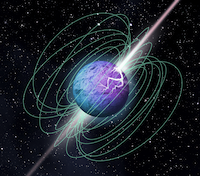
Fast Radio Bursts FRB Fast Radio Bursts are very short (about a thousand of a second long) bursts of radio waves of mostly extra-galactic origin. First discovered by Duncan Lorimer in 2007, there are multiple theories but we still don't know their origin.
Persistent, i.e. long-term radio emission has been found associated to a few FRBs. EMission in other wavelengths is not yet established. Observation timescales are thus highly uncertain. 
Unclassified Optical transients Unclassified OT Optical transients or OT are transient visible in the optical wavelength range. These events are detected as brightness changes and have not yet been classified.
Typical observation timescales are ranging from hours to weeks. Monitoring of classification (often via spectroscopic observations) is highly encouraged. 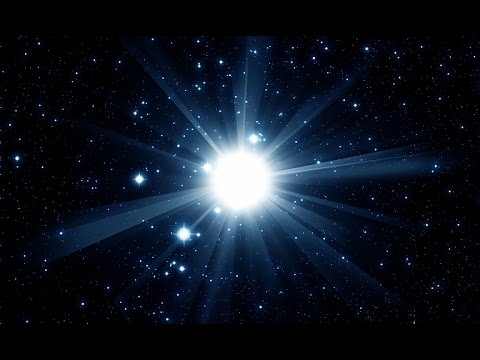
Classified Optical transients Classified OT These are transient phenomena that have been detected in the optical domain and classified (often via spectroscopic observations). The classes are very diverse and include Galactic sources like novae and CVs, but also extra-galactic events like TDE, AGN, etc...
Observation timescales strongly depend on the specific class of the transient and can range from days to weeks or longer. 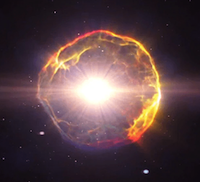
Classified Supernovae SN Supernovae are powerful and luminous explosion of stars in other galaxies. They can leave behind neutron stars, black holes or nebulas. The light produced by a supernova fades over several weeks to months and is sometimes comparable with the light of an entire galaxy.
Dense (e.g. daily) monitoring for extended periods of time until the emission is no longer detectable. 
Gamma-Ray Bursts GRB Gamma-Ray Bursts are typically detected as short X-ray bursts. They can be divided into two types, long GRBs and short GRBs. Long GRBs last last from a few seconds to minutes and originate from death of massive stars. Short GRBs last less than 2 seconds and may come from the result of the merger of neutron stars. GRBs are usually followed by an afterglow detectable in multiple other wavelengths.
Observations in the optical wavelength need to take place within a few hours (typically within 24h). Depending on the detecting instrument, the localisation uncertainty can be quite large (tens of square-degrees). 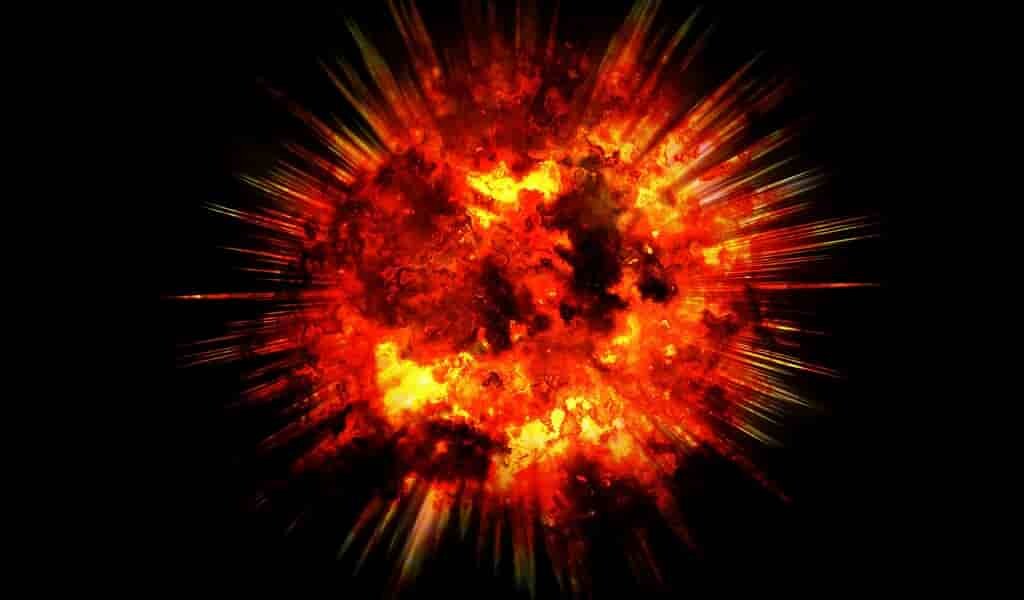
Burst Unclassified transients and flares of existing sources. These are often short-lived bursts of radiation in one wavelength (e.g. gamma-ray flares detected by the LAT instrument onboard the Fermi satellite). Emission in other wavelengths is possible but highly uncertain.
Observations in the optical wavelength should cover and extend beyond the detected emission timescale (e.g. typically several days for gamma-ray flares). 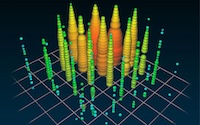
Neutrino A Neutrino is a fundamental particle similar to an electron but has no electrical charge and no (or very small) mass. Neutrinos originate from radioactive decay and nuclear reactions but are also produced in collisions of high-energy particles in the universe. They rarely interact with matter and travel in straight lines allowing us to observe processes inaccessible to other telescopes.
Sources of high-energy neutrinos are typically associated with extreme astrophysical processes, such as supernovae, gamma-ray bursts, and the acceleration of cosmic rays in active galactic nuclei. Timescales for these processes can vary widely, but observations are often made on timescales of days to weeks. Often, large uncertainty regions of several square-degrees need to be considered. 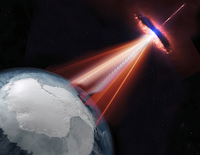
Coincidence between neutrinos and high-energy gamma rays NUEM In an attempt to identify the sources of high-energy neutrinos, we search for coincident high-energy gamma-ray emissions. Observations in the optical wavelength should cover and extend beyond the detected emission timescale (e.g. typically several days)). 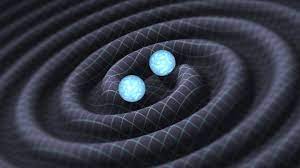
Gravitational wave GW Gravitational waves are ripples in space. They originate from violent processes involving objects with huge masses such as black holes spiraling towards each other. Most of these phenomena are not expected to emit electromagnetic radiation but some, those involving neutron stars, are expected to do so. This emission is very similar to GRB (see above)
Observations in the optical wavelength need to take place within a few hours (typically within 24h). Often, very large uncertainty regions need to be considered.
- Catalogs of known sources (available in cone searches)
- 4FGL: GeV gamma-ray sources in the Fermi-LAT catalog (4FGL-DR4)
- TeVCat: TeV gamma-ray sources in the TeVCat catalog
- X-ray: SGR/AXP: soft gamma-ray repeaters / anomoulus X-ray pulsars
- X-ray: HMXB: high-mass X-ray binaries
- X-ray: LMXB: low-mass X-ray binaries
- IceCat: high-energy neutrinos from the IceCube catalog (IceCat-1)
- Color scheme used to identify various observatories:
-
Available archival data and references
- 4FGL: Fermi-LAT 4FGL-DR4
- TeVCat: TeVCat catalog (status: November 2024)
- SGR/AXP: McGill Online Magnetar Catalog + recent announcements
- HMXB: HMXBwebcat, a catalogue of high-mass X-ray binaries in the Galaxy (v2024-08, Fortin et al. (2023) A&A 671, A149 (2023))
- LMXB: LMXBwebcat, a catalogue of low-mass X-ray binaries in the Galaxy (v2024-01, Fortin et al. (2024) A&A in press)
- IceCat-1: ICeCube catalog of high-energy neutrinos
- GRBs : Fermi, Swift and INTEGRAL detected GRBs (since January 2016)
- GWs : all alerts emitted during O3 (2019-04-01 until 2020-03-27) and O4 (2023-05-24 until tbd)
- Neutrinos : all publicly available alerts: HESE/EHE + Bronze/Gold astrotracks + Cascades (first alert: 2016-04-27)
- FRBs : all FRBs reported to TNS
- SNe + OTs: all classified events reported to TNS (official IAU repository since January 2016)
- unclassified optical transients reported to TNS (complete after mid-october 2023)
- transients reported to CBAT, e.g. novae, SNe, etc. (complete since January 2016)
- AMON Nu-EM : all HAWC-IceCube coincidences (first alert: 2020-07-17)
The full history of changes to transient events listed within Astro-COLIBRI is available since 2024-07-01.
-
Data credits
- We use data products from the following sources:
- NASA Global Coordinates Network (GCN)
- NASA High Energy Astrophysics Science Archive Research Center (HEASARC)
- IAU Transient Name Server (TNS)
- Central Bureau for Astronomical Telegrams (CBAT)
- FLaapLUC
- Asteroid Terrestrial-impact Last Alert System (ATLAS)
- ASAS-SN
- Zwicky Transient Facility (ZTF)
- Fink broker
- Wide-field Infrared Survey Explorer (WISE) data obtained from VizieR
-
Image credits
- We use images from the following sources:
- NASA
- DESY, Science Communication Lab
- IceCube Observatory
Release history
A visual summary can be found on our YouTube channel:
